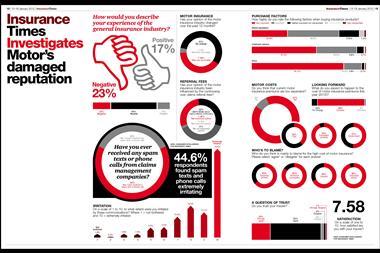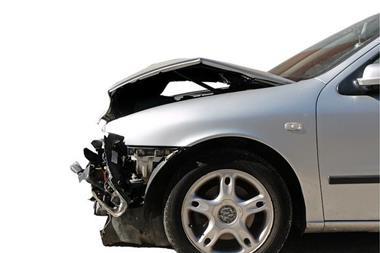E&Y predicts 20-point combined ratio decrease

Accounting firm Ernst & Young (E&Y) expects motor insurers to report much improved 2011 results after their “dismal performance” of the last two years.
The motor industry suffered losses of more than £5bn in 2009 and 2010, posting their worst results in nearly two decades. The rise of price comparison sites, high claims cost inflation and lower reserve releases pushed the industry’s combined ratio to nearly 121% in 2010.
However, based on its analysis of third-quarter results, E&Y expects a “significant improvement” in 2011 results. It predicts that the combined ratio could improve by 20 percentage points, which would put the industry’s underwriting results close to break-even for the year.
The improvement has been driven by the rate increases that took place during 2010 and the early part of 2011, which E&Y expects will push net earned premiums up 20%. The company added that the industry’s greater control of claims costs had also contributed to the improved performance.
“The losses were unsustainable – by 2009 the market had either run out of reserves to prop up performance or accepted that there were fundamental problems within the market that needed to be addressed,” said Catherine Barton, partner and actuary in the financial services division at Ernst & Young. “Insurers have now responded with price rises and more focus on claims cost control, which we believe will see the tide being turned.”
E&Y said bodily injury costs are rapidly approaching two-thirds of total claims costs, up from one-third a decade ago, which poses challenges for insurers’ business models.
“As injury claims stay open for longer, exposed to the ever-present threats of legislative and economic changes, the ability for insurers to understand their true performance and to price appropriately for it becomes ever more difficult,” said Barton.
Although UK motor insurers’ profitability is improving, better performance brings with it fresh problems.
“Another concern for the industry as the profits improve is that the recent pressure from consumers and politicians about the lack of affordability of motor insurance will be increased,” said Barton. “As the market results improve, the impact of years of poor performance could be forgotten.”
Hosted by comedian and actor Tom Allen, 34 Gold, 23 Silver and 22 Bronze awards were handed out across an amazing 34 categories recognising brilliance and innovation right across the breadth of UK general insurance.













































No comments yet